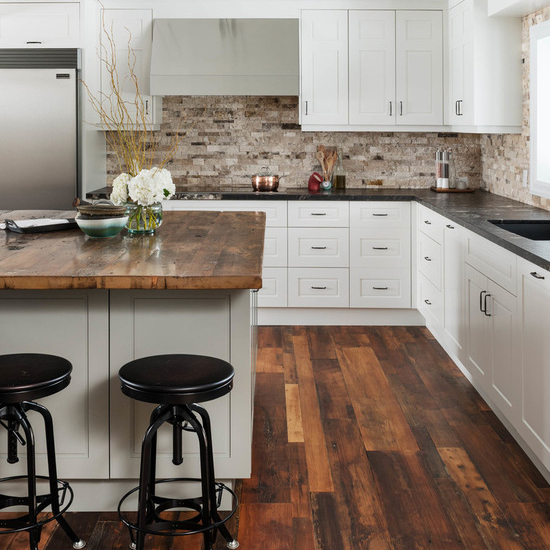There are many different types of tiles like ceramic, porcelain, stone, glass and others. Unlike others, porcelain and ceramic have many similarities but still they are two different types of tiles and based on your application one might be more suitable than the other one. Interestingly, ceramic and porcelain tiles are not only made with different types of clay but they are also manufactured on different temperature.
Porcelain is treated with significantly higher temperature than ceramic and that’s why it is more solid, less porous and less water absorbing than ceramic tiles. The main difference between ceramic and porcelain tiles is their ability to absorb water. A tile is considered porcelain (actually they are not made of porcelain but it is a given name) if it absorbs less than 0.5% of water. Let’s see how this attribute makes a big difference and which tile is suitable where.
Which Tile You Should Use if You Are Under Tight Budget?
Now that’s a trick question as different ceramic and porcelain tiles come with varying price tags. However, if you compare them side by side, porcelain tiles are always more expensive than ceramic tiles. So, if you are under a tight budget, then using ceramic tiles would be a smarter decision. It is almost impossible to find a porcelain tile with high quality and less than $3 per square foot price tag. The price goes up and easily exceeds $6 per square foot limit when it comes to porcelain tiles.
On the other hand, ceramic tiles are significantly cheaper as you can find a good quality ceramic tile for $3 per square foot and even the most premium ones are available for $4 per square foot. If quality if not the high priority here, you can find ceramic tiles for less than $2 per square foot. If you are compromising on the quality, it doesn’t mean you have to compromise on the design too. There are hundreds of different designs available in ceramic tiles and you can even choose latest trends like wood-like tiles to give your kitchen space a modern look.
Which Tile You Should Use Outdoor?
That’s pretty simple; porcelain must be your first and only option outdoor especially if the temperature goes below freezing point in winters. As mentioned earlier, ceramic tiles are porous that means they absorb water that means in freezing environment tiles would absorb water that would expand and break the tiles. In some harsh conditions, ceramic tiles won’t even last a single night outdoor.
Even if it is not freezing outside, ceramic tiles wouldn’t be a good choice because they would have to bear lots of water contents that would reduce their overall lifespan. Generally, outdoor tiles get more foot traffic than indoor tiles so using ceramic outdoor would be a bad idea from this prospective too.
Which Tile You Should Use if the Application has High Foot Traffic?
Both of the tiles (ceramic and porcelain) are suitable for high foot traffic applications like living rooms and hallways. However, if you are looking for the best option (considering other factors as well) then porcelain should be your first choice as these tiles are much denser and durable as compared to ceramic tiles. The high density of porcelain tiles not only makes them stronger but also makes them scratch resistant and wear resistant – both of these attributes are highly important in applications with high foot traffic.
Many area of the house are considered high foot traffic areas; for example, living room, hallway, kitchen (if social and family gathering is a common practice) and might be some other areas depending on the kids and pets. It is recommended to use porcelain in those areas to increase the durability of tile installation.
Which Tile You Should Use If the Tile Installation is A DIY Project?
Many people would be wondering that why being a DIY project is an influential factor in deciding which tile should be used. The reason is quite simple; if you are not a professional tile installer, then it would be a nightmare for you to install porcelain tiles. As mentioned earlier, porcelain tiles are much denser than their counterpart yet being denser also has some disadvantages. For example, porcelain tiles are difficult to cut and difficult to install on walls.
It would be even more difficult in applications where you need to cut lots of tiles for corners and to meet the space requirements. If you use porcelain tiles in such situations, either you would need professional help or you would break lots of tiles in the process that would ultimately increase the cost.
Which Tile You Should Use if the Application has High Humidity and Moisture?
That’s an easy one; porcelain should be your first choice if the application has high moisture. That includes bathroom, kitchens, outdoor applications and even laundry room. Porcelain is dense and the high density makes it impossible for water to penetrate the tiles. As mentioned above, the water absorption rate of less than 0.5% is considered pretty impressive. Many home owners use ceramic for these applications as well because ceramic is significantly cheaper than porcelain.
Those people are not entirely wrong as ceramic tiles come in many different water absorption ratings; tiles with less than 3% of water absorption rate are still considerably fine with water-rich applications. There is another smart solution; you can use porcelain as backsplash in kitchen and other tiles could be ceramic tiles. This layout would reduce the overall cost drastically.
We have discussed five different scenarios where you might get the dilemma of using ceramic or porcelain tiles. And hopefully now you understand the key differences between both tiles and their different uses. By the way, both types are easily cleanable with sponge or mop.

